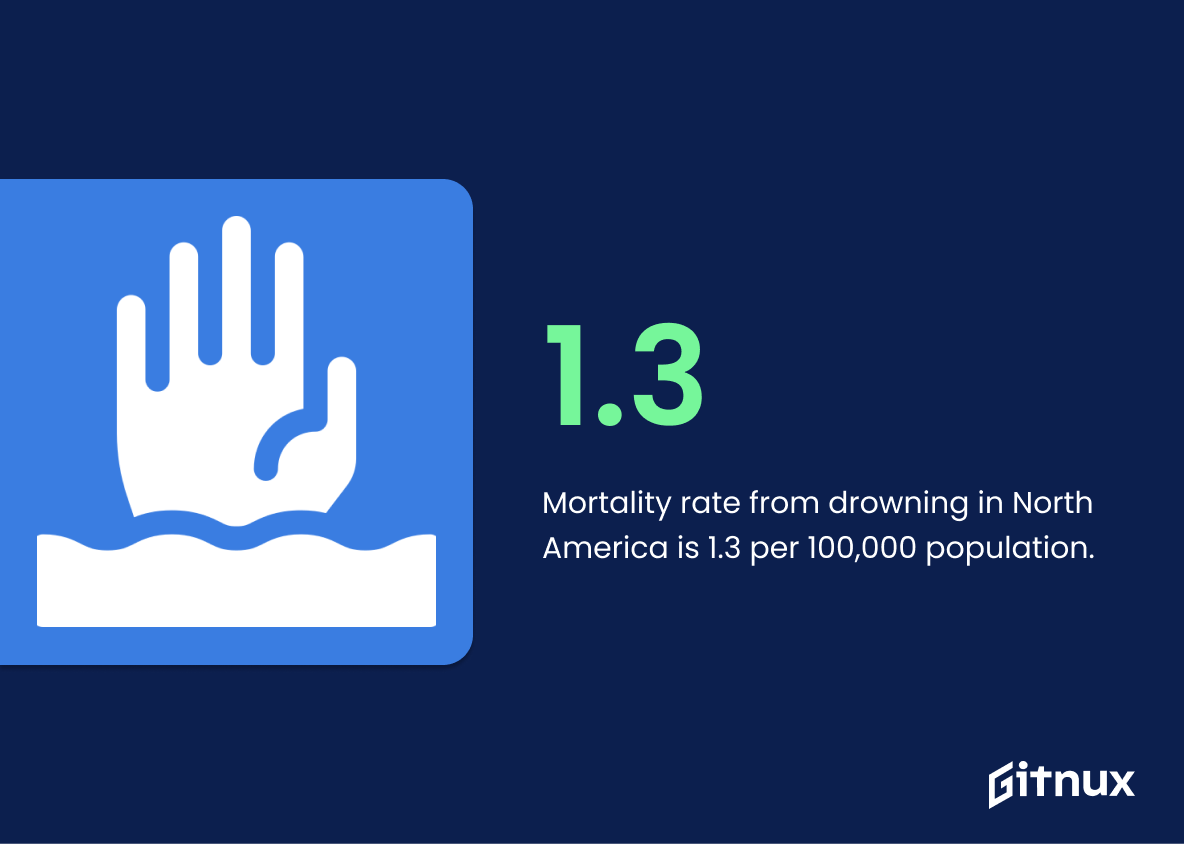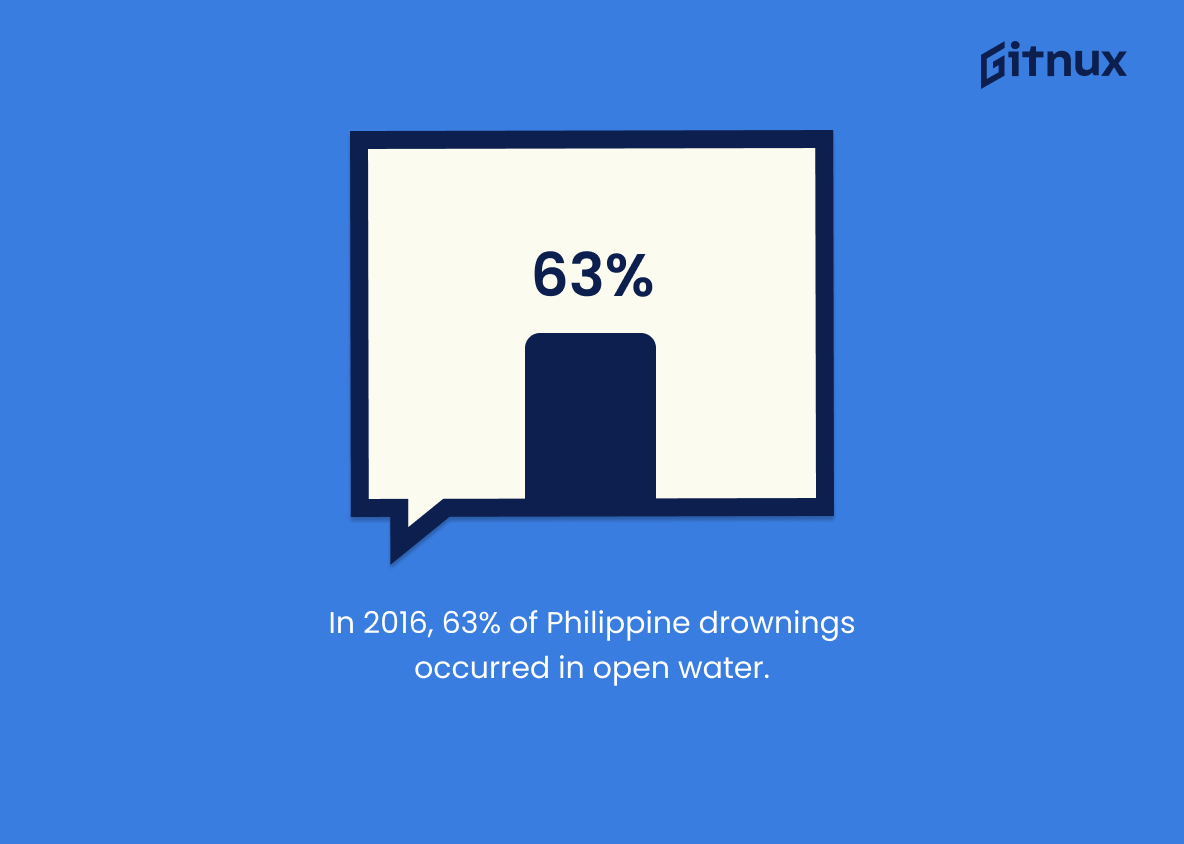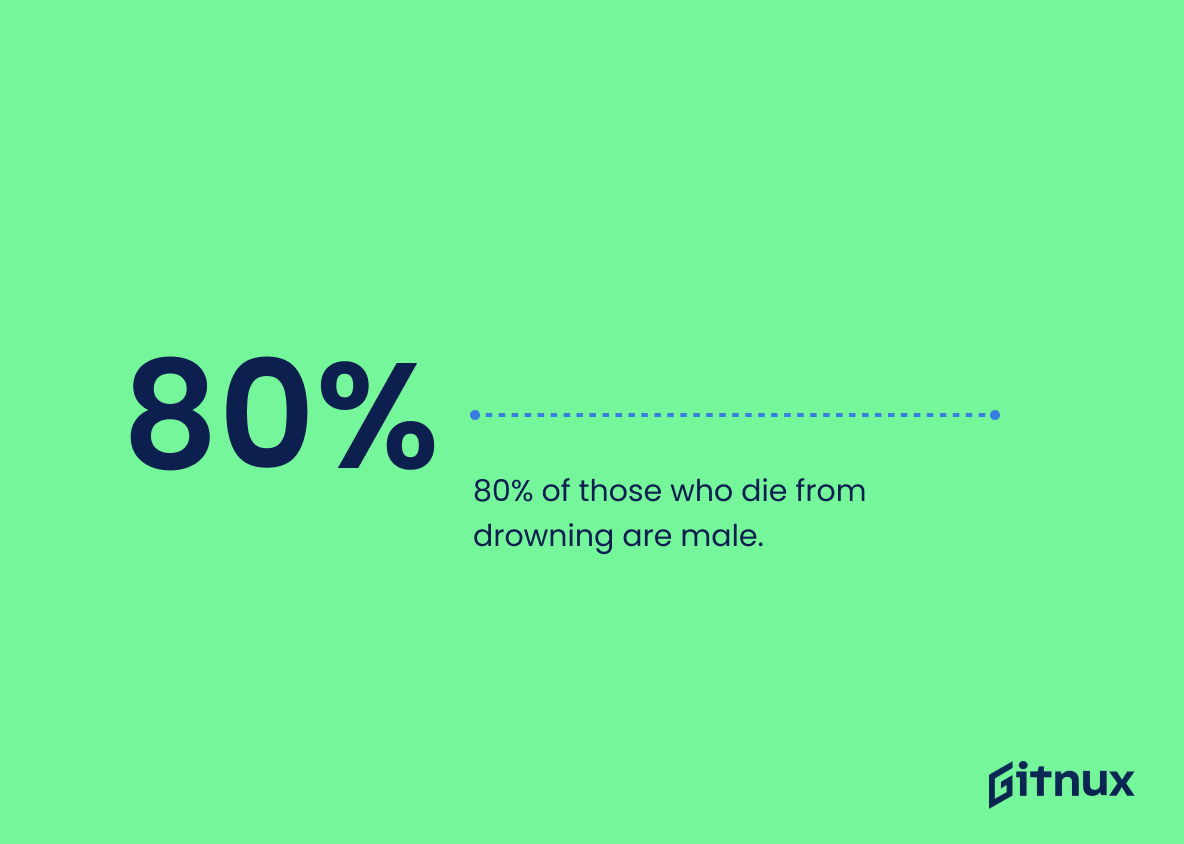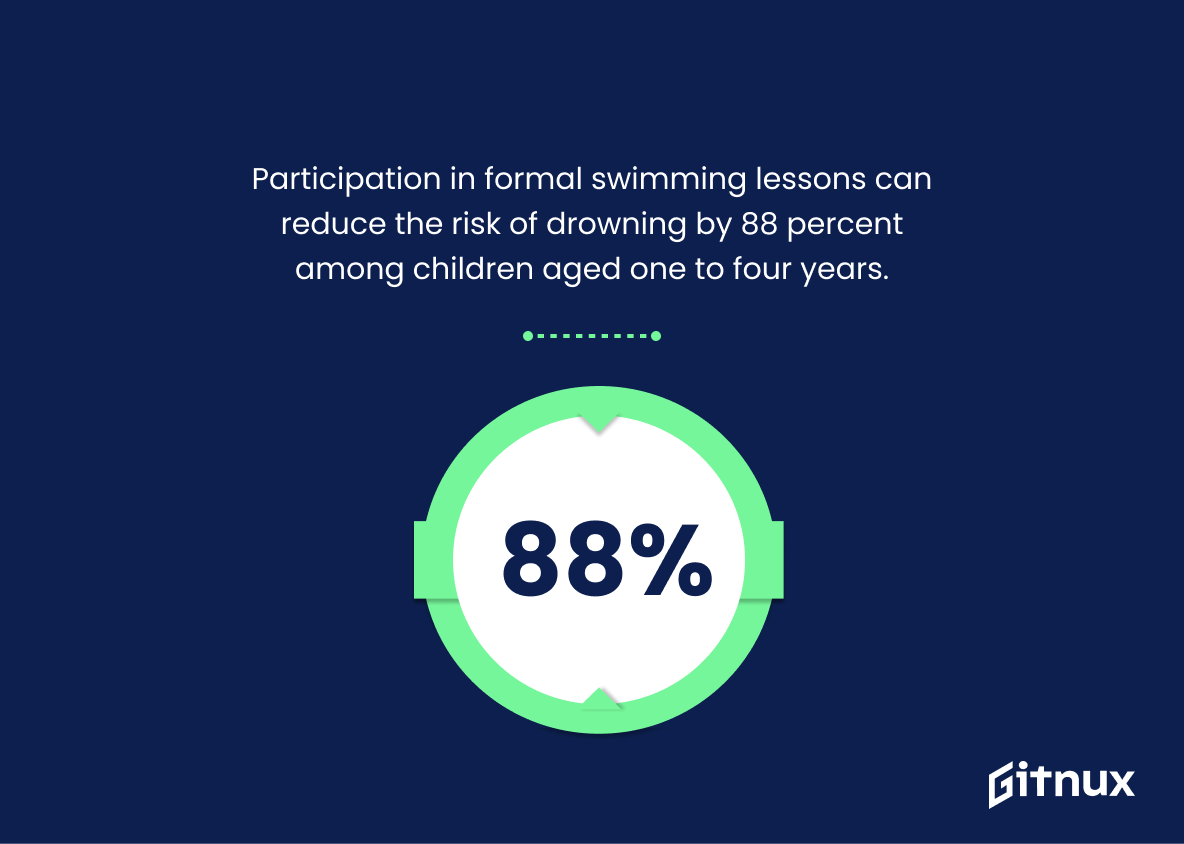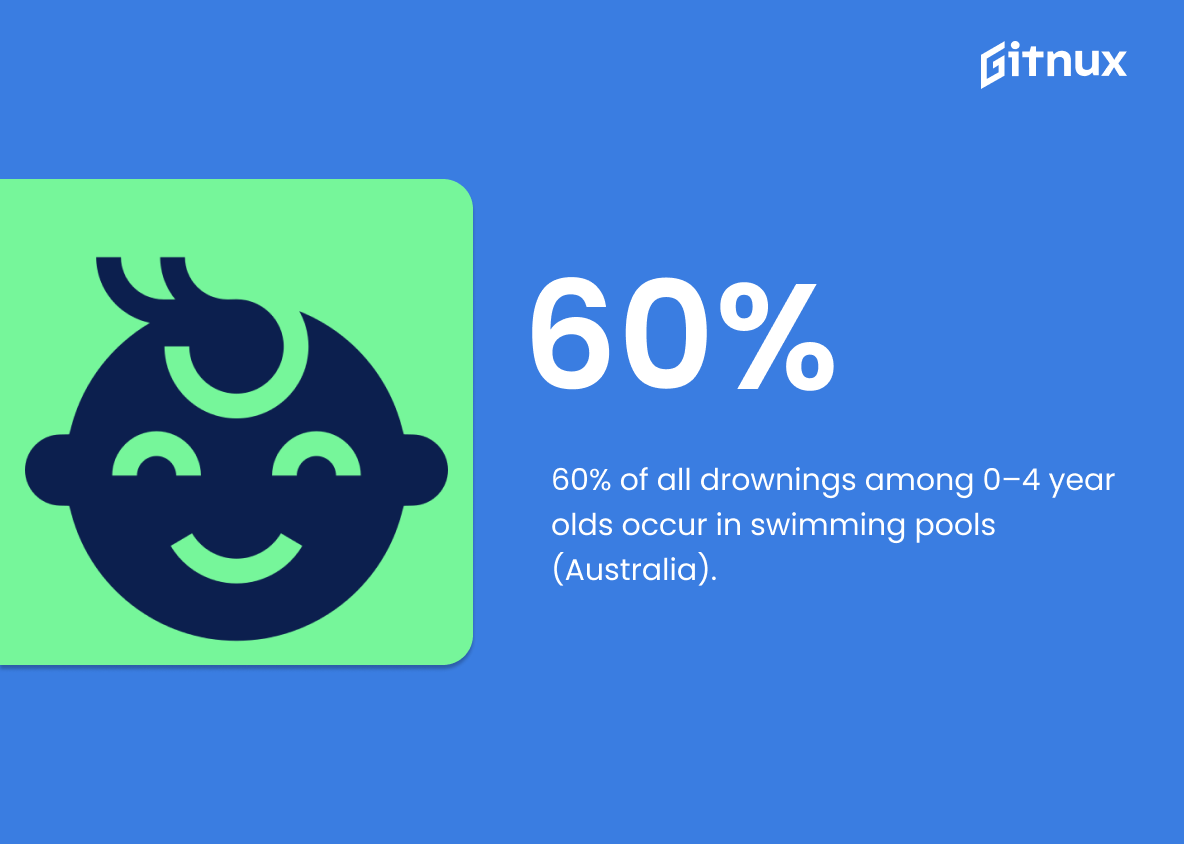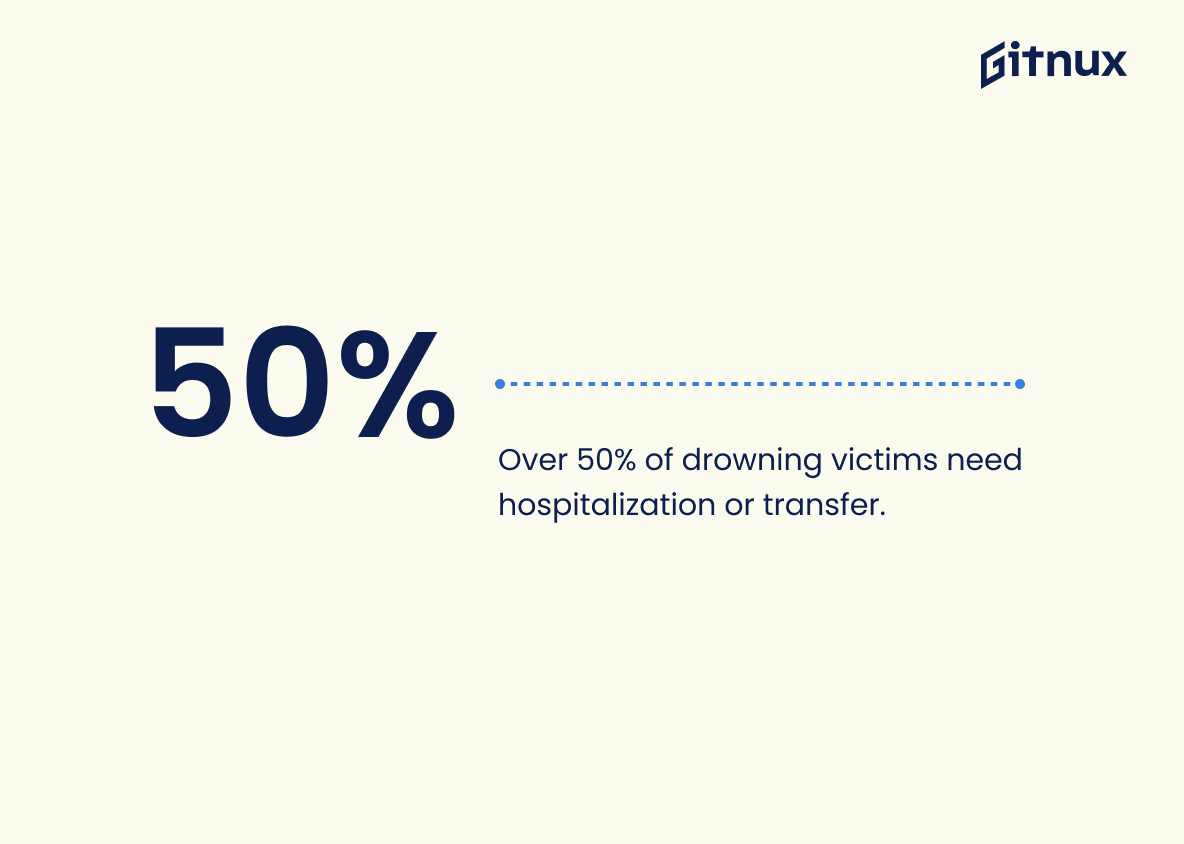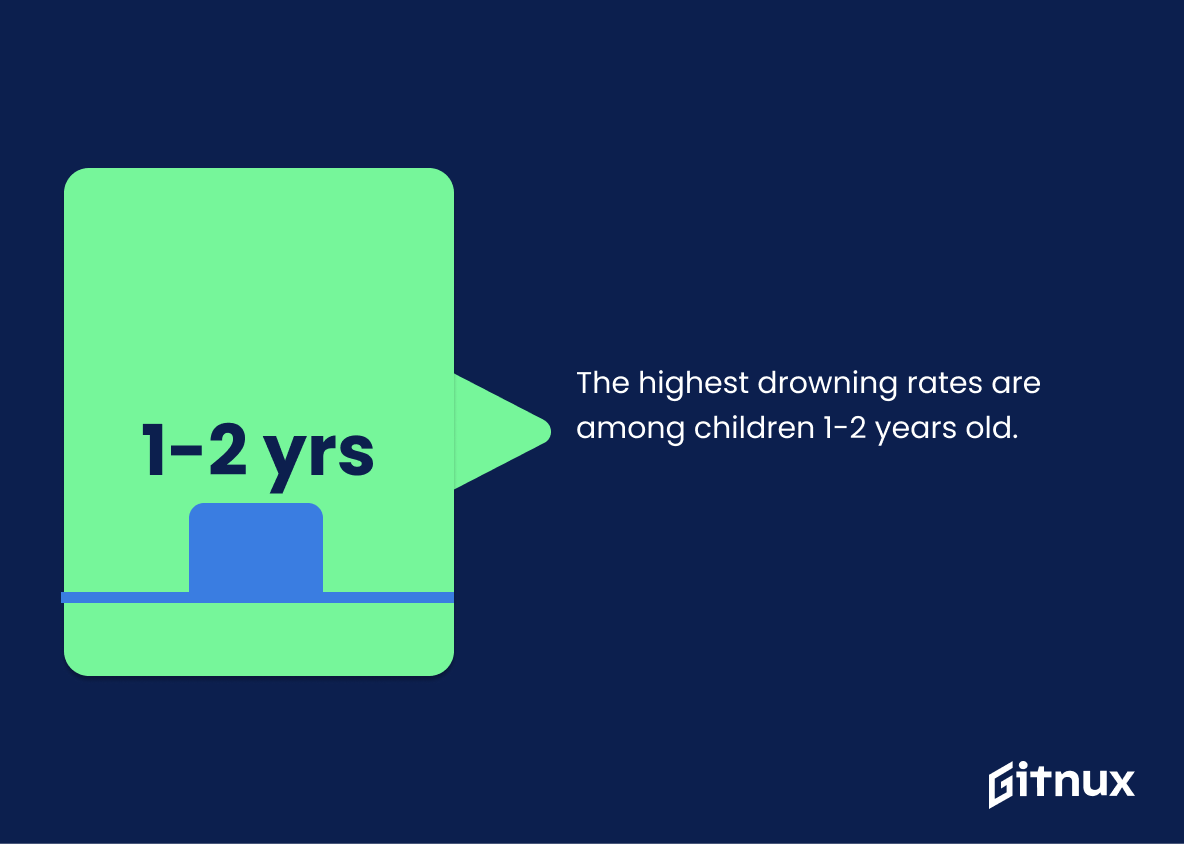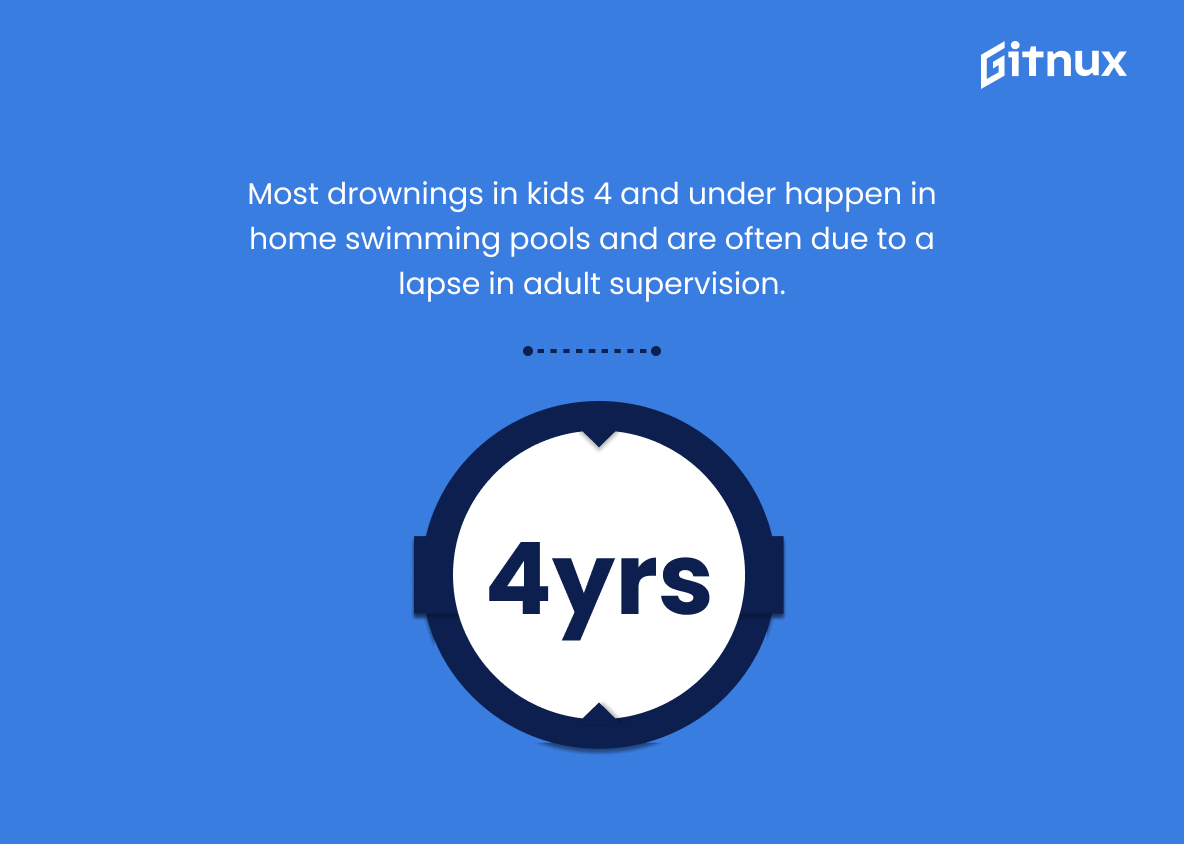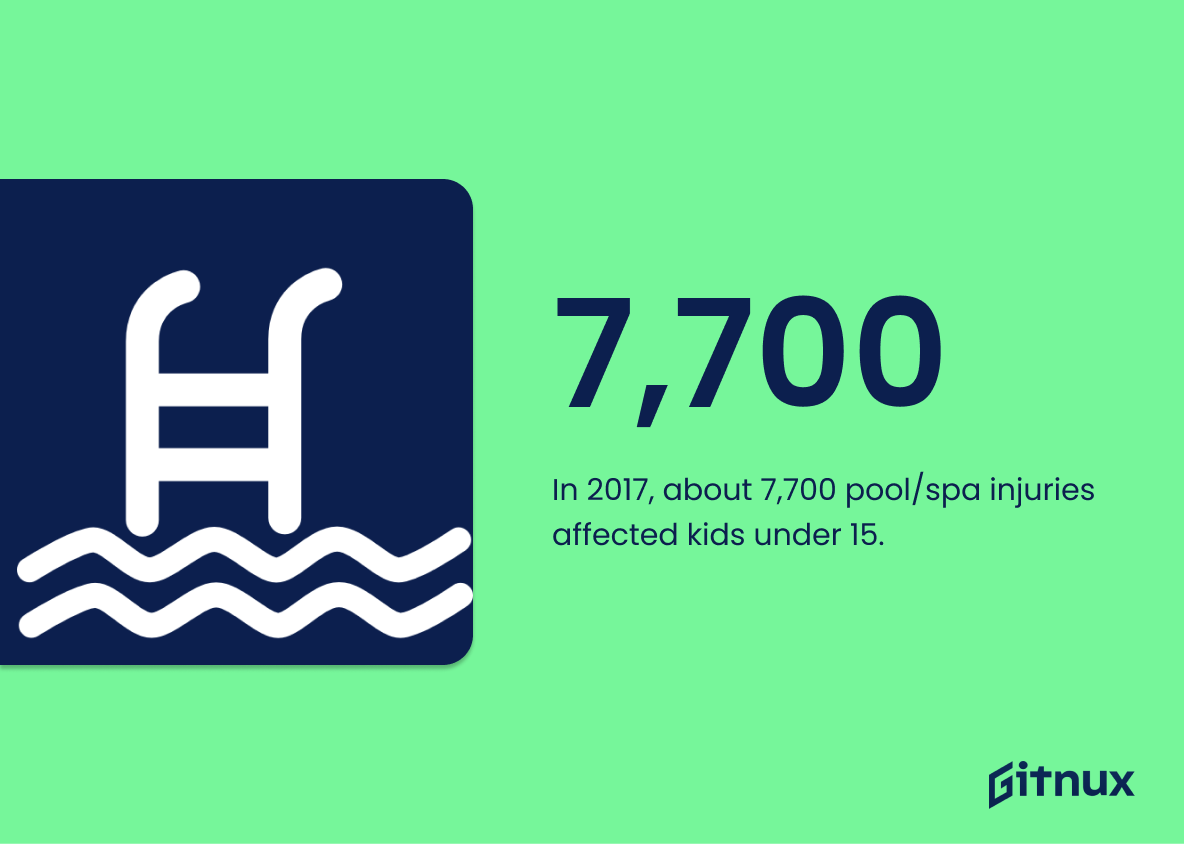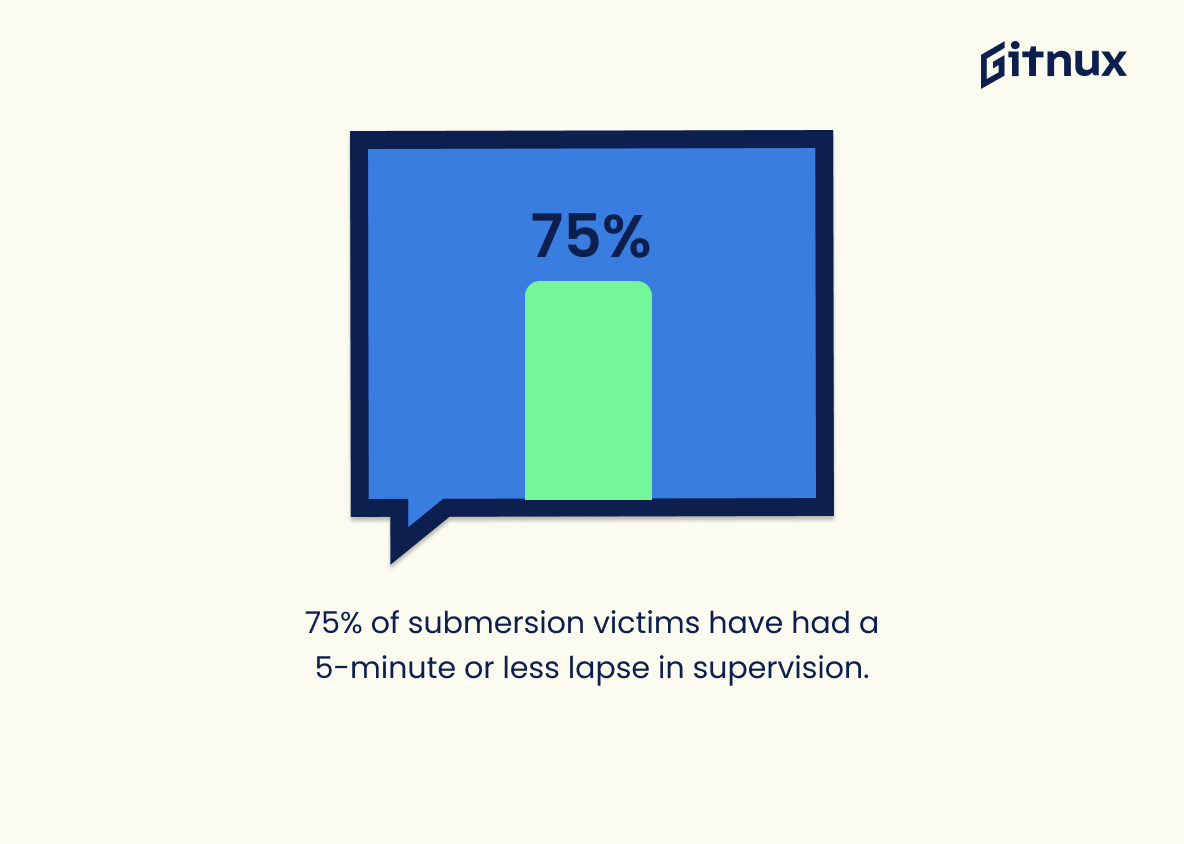Dive into the dynamic world of water safety statistics. From the crystal-clear swimming pools in your yard to the vast blue oceans stretching beyond the horizon, water activities bring immense joy and entertainment. Yet, there prevails an underlying threat, often underestimated by many of us. Globally, drowning ranks as a significant accidental cause of death and injury. Highlighting the importance of water safety cannot be overstressed. This blog post sheds light on some of the most recent and relevant water safety statistics, creating awareness about potential hazards and emphasizing preventive measures. Understanding these figures may be more than just informative — it could be lifesaving. Join us as we wade through the facts and figures vital in enabling safer interactions with water in our lives.
The Latest Water Safety Statistics Unveiled
Mortality rate from drowning in North America is 1.3 per 100,000 population.
Highlighting the water safety statistic of a 1.3 per 100,000 mortality rate from drowning in North America underscores the urgency of ongoing education and safety measures in and around water. It’s an understated reminder of the lurking dangers within even the most seemingly safe water environments. In a blog post revolving around Water Safety Statistics, this sobering figure helps us not to get complacent, emphasizing that each number in that statistic represents a life that could perhaps have been saved through proper precautions and safety protocols.
As of 2016, 63% of fatal drownings in the Philippines happened in open water areas such as seas, lakes, dams, rivers, and canals.
Delving into the chilling waters of this statistic reveals an alarming fact. Imagine a landscape dotted with seas, lakes, dams, rivers, and canals, picturesque to the observer’s eye. Yet, beneath this idyllic vista hides a sobering reality. In 2016, nearly two-thirds of fatal drownings in the Philippines occurred not within the confines of contained, man-made water features, but lamentably, in these expansive open water environments.
This statistic takes a deep plunge into the significance of water safety education for those who frolic and fish in open waters, braving not just the forces of nature, but unforeseen risks beneath the surface. It’s a loud wake-up call that echoes through the BLOG POST about Water Safety Statistics, shrilling for the need of measures to address this issue. It’s more than just a number, it’s a silent scream for awareness, a demand for vigilance, and a catalyst for further action.
80% of those who die from drowning are male.
Highlighting the statistic that “80% of those who die from drowning are male,” serves as an unexpected wake-up call within the realm of water safety. Its stark reminder of the seemingly silent and ominous threat lurking beneath fun-filled swimming and aquatic activities could potentially shift perceptions. Consequentially, it may encourage more focused water safety initiatives, making it a pivotal detail in addressing water-related risks. Furthermore, this statistic indirectly highlights the need for increased water safety training and awareness, particularly amongst males who appear to be more at risk. It’s an important piece of the puzzle which, when correctly understood and placed within a broader water safety strategy, could be instrumental in reducing drowning incidents.
Among children ages 1-4 in the USA, most drownings occur in home swimming pools.
Diving into the water context of this statistic from the realm of hidden danger, it profoundly illuminates the urgency of water safety protocols, especially in domestic spaces like home swimming pools. Predominantly striking the innocent age bracket of 1-4 years in the USA, these figures serve as huge waves of warning, encouraging careful supervision and the implementation of crucial safety measures around these common summer havens. Highlighting this statistic on a blog post about Water Safety Statistics ensures that readers understand that danger often lurks where we least expect it, and therefore, reinforces the importance of vigilant watch and preventive strategies at all times, particularly when children are involved.
Participation in formal swimming lessons can reduce the risk of drowning by 88 percent among children aged one to four years.
Unveiling the life-saving significance of formal swimming lessons, research stunningly displays an 88 percent decrease in the risk of drowning for children aged one to four years old. Through the lens of water safety statistics, this reveals an influential preventative measure for one of the leading causes of accidental death in young children. Painted with the strokes of numbers, the story told is an urgent one – advocating for the critical role of swimming education in protecting the lives of our little ones. A statistic that is not merely a number, but an alarm bell ringing out across the blog post, urging all parents to ensure their tiny tots are skilled in the art of swimming.
60% of all drownings among 0–4 year olds occur in swimming pools (Australia).
Highlighting the compelling statistic that a significant 60% of drownings within the vulnerable 0-4 years age group occur in swimming pools helps illuminate the challenging scenarios families in Australia often face. These figures not only underline the importance of vigilant supervision around pools, but also underscore the critical role of water safety education for both children and adults. It’s a grim reminder that danger isn’t always lurking in the vast ocean or swift-flowing rivers, but can be as close as our backyard. This statistic serves as a wake-up call, emphasizing that safety measures, constant supervision, and early swimming lessons are not just optional, they are indeed life-saving.
Alcohol is involved in up to 70% of deaths associated with water recreation.
Diving into the depth of this hefty statistic, “Alcohol is involved in up to 70% of deaths associated with water recreation,” exposes the underwater current of a critical issue. Picture this, approximately 7 out of every 10 buoyant smiles, splashing around in water-based fun, are extinguished by the intrusive hand of alcohol. This crude illustration serves as a stark reminder for all water enthusiasts skimming through this blog. It underlines the lethal cocktail of alcohol and water revelry, urging individuals to reconsider that “just one more drink” before heading out to engage in aquatic hobbies. Ultimately, your life jacket might not save you, if drowned in alcohol before even touching water. Hence, the notion of ‘drink, dive, danger’ is a narrative that every water adventures blog, including ours, should assert and reiterate for promoting safety while making a splash.
More than 50% of drowning victims treated in emergency departments require hospitalization or transfer for further care.
Diving headfirst into the compelling figure, we uncover that more than 50% of drowning victims treated in emergency departments necessitate hospitalization or transfer for further care. This statistic goes beyond mere numbers and uncovers a hidden narrative within our discourse on water safety. It accentuates the severity of water-based incidents that can ripple out, leading not just to a rush to the emergency room, but a longer-term struggle towards recovery. The deeper understanding of this fact is essential to setting forth a more profound appreciation of water safety. Arming ourselves with this knowledge allows us to navigate waters more wisely, casting a spotlight on preventative measures in our collective effort to calm these stormy statistics.
The highest drowning rates are among children 1-2 years old.
Diving deep into the heart of water safety statistics, we encounter a chilling fact: the most vulnerable victims to drowning are children aged 1 to 2 years old. This emerges as a focal point in our discourse, as it underscores an urgent need to prioritize the safety of our youngest population around water bodies. Whether it’s a bathtub or a swimming pool, these ecosystems of danger pose a menacing threat to those tots who cannot yet defend themselves against the unpredictable nature of water. Grassroot strategies for enhanced water protection, like parental vigilance, use of safety equipment and initiation of early swimming lessons, could be vital life savers, particularly for this at-risk age group. By spotlighting this alarming statistic, we engage in a crucial conversation around preventive measures, encouraging a proactive response to this burgeoning child safety issue.
Most drownings in kids 4 and under happen in home swimming pools and are often due to a lapse in adult supervision.
By contemplating this astonishing figure about the most common location for drownings in children aged 4 and under, we plunge headfirst into the depth of concern on home water safety. This statistic reforms the conception of danger, no longer lying in the distant deep seas or public pools, but hauntingly present in our own backyards. The chilling reality of adult supervision occasionally falling through the safety net underscores the stern necessity for continuous vigilance around water bodies, even at home. Consequently, this number elevates the urgency to address water safety, as prevention rests primarily in the hands of adults supervising the impromptu aqua adventurers, hence making it a vital piece in the puzzle of water safety statistics.
In 2017, there were an estimated 7,700 pool or spa emergency department-treated submersion injuries involving children younger than 15.
Unmasking the stark reality behind the veil of figures, one might be startled to discover that in 2017, there existed an appalling statistic; nearly 7,700 pool or spa-related submersion injuries required emergency treatment among children under the age of 15. This unsettling number forms a crucial cornerstone of water safety statistics in our examination of risks associated with aquatic activities. This information isn’t just cold data, it narrates the grim story of potential threats lurking in our leisure environment.
In an arena where numbers speak louder than words, this particular set of data throws a spotlight on two critical fronts. First, it validates the urgency and gravity of stringent water safety measures, especially for children. Second, it acts as a yardstick to gauge the efficacy of such measures and tailor them accordingly for the future.
In essence, embedding this alarming statistic in the fabric of our blog post acts as a wake-up call for the reader. It underscores the urgency to familiarize oneself with water safety and prevention measures, turning them from mere spectators of the data into active participants in a collective action against water-related accidents.
75% of submersion victims have had a 5-minute or less lapse in supervision.
Emphasizing this statistic is like showing a hidden enemy in our backyard. Shockingly, it drives home the point that a disproportionate number of submersion victims suffered in a time span shorter than it takes to boil an egg. This stark revelation underscores the acute need for relentless supervision around water bodies. It serves as a jarring wake-up call that lapses in supervision, even as short as five minutes, can lead to frightening implications. So, while discussing water safety statistics, this pointer takes the frontline, like a glaring red warning sign, reminding parents and caregivers about the non-negotiable necessity of vigilant oversight. Certainly, these numbers reinforce the adage that prevention is better than cure – especially when the cure could be a difficult road to tread.
Drowning is the leading cause of injury death in children 1-4 years old.
Portrait this shocking revelation as a stark wake-up call: “Let these numbers seep into your consciousness, a chilling reminder of the treacherous dance between water and innocence, where drowning emerges as the grim reaper stalking our youngest, those aged 1-4 years. In the midst of playful splashes and innocent laughter, life hangs by a delicate thread. Hence, understanding water safety is no longer a matter of choice, but an imperative lesson in survival – a narrative our blog assures to unfurl eloquently in the ensuring chapters.”
Conclusion
Water safety is a significant matter that demands serious attention and respect. The statistics explored in this blog post illuminate the grim realities and potential dangers of water-related activities. They serve as a stark reminder that safety measures should never be overlooked, no matter the setting – be it swimming pools, large water bodies, or even bathtubs. Young children, particularly those below the age of 4, are an especially vulnerable group, underscoring the need for constant, focused adult supervision. Furthermore, acquisition of water safety skills, such as swimming and lifesaving techniques, are essential for individuals of all ages. Knowledge about water safety, combined with appropriate preventative measures, can undoubtedly reduce the number of water safety incidents significantly. Let’s make the conscious decision to elevate safety and prevent unnecessary loss of life.
References
0. – https://www.www.redcross.org
1. – https://www.www.poolsafety.gov
2. – https://www.www.safekids.org
3. – https://www.pubmed.ncbi.nlm.nih.gov
4. – https://www.www.cdc.gov
5. – https://www.www.poolsafely.gov
6. – https://www.www.rospa.com
7. – https://www.www.ncbi.nlm.nih.gov
8. – https://www.apps.who.int
